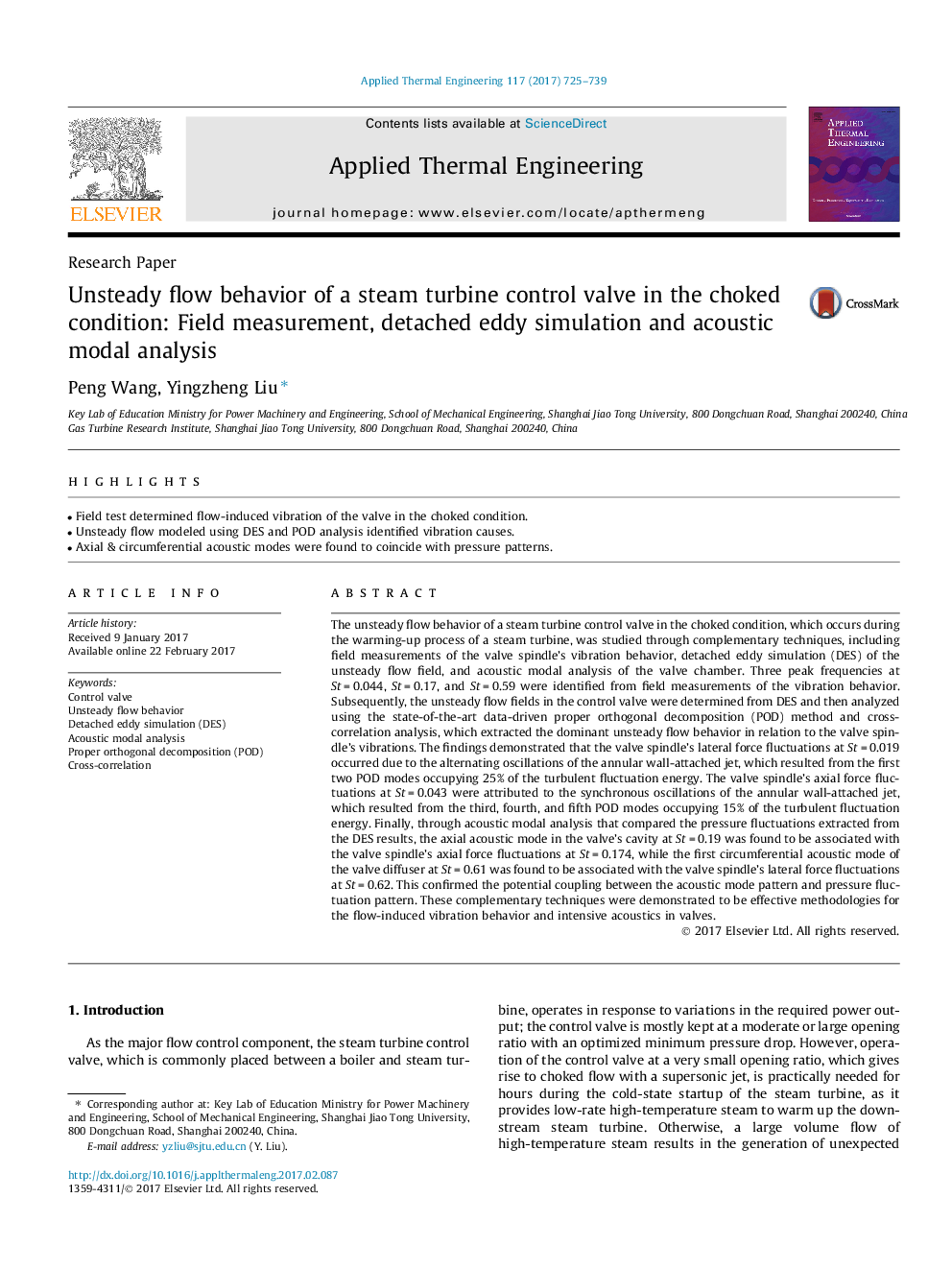| کد مقاله | کد نشریه | سال انتشار | مقاله انگلیسی | نسخه تمام متن |
|---|---|---|---|---|
| 4991564 | 1457112 | 2017 | 15 صفحه PDF | دانلود رایگان |
عنوان انگلیسی مقاله ISI
Unsteady flow behavior of a steam turbine control valve in the choked condition: Field measurement, detached eddy simulation and acoustic modal analysis
ترجمه فارسی عنوان
رفتار جریان نامنظم شیر یک توربین بخار در شرایط خالی: اندازه گیری میدان، شبیه سازی گردابی جداگانه و تجزیه و تحلیل مودال آکوستیک
دانلود مقاله + سفارش ترجمه
دانلود مقاله ISI انگلیسی
رایگان برای ایرانیان
کلمات کلیدی
موضوعات مرتبط
مهندسی و علوم پایه
مهندسی شیمی
جریان سیال و فرایندهای انتقال
چکیده انگلیسی
The unsteady flow behavior of a steam turbine control valve in the choked condition, which occurs during the warming-up process of a steam turbine, was studied through complementary techniques, including field measurements of the valve spindle's vibration behavior, detached eddy simulation (DES) of the unsteady flow field, and acoustic modal analysis of the valve chamber. Three peak frequencies at St = 0.044, St = 0.17, and St = 0.59 were identified from field measurements of the vibration behavior. Subsequently, the unsteady flow fields in the control valve were determined from DES and then analyzed using the state-of-the-art data-driven proper orthogonal decomposition (POD) method and cross-correlation analysis, which extracted the dominant unsteady flow behavior in relation to the valve spindle's vibrations. The findings demonstrated that the valve spindle's lateral force fluctuations at St = 0.019 occurred due to the alternating oscillations of the annular wall-attached jet, which resulted from the first two POD modes occupying 25% of the turbulent fluctuation energy. The valve spindle's axial force fluctuations at St = 0.043 were attributed to the synchronous oscillations of the annular wall-attached jet, which resulted from the third, fourth, and fifth POD modes occupying 15% of the turbulent fluctuation energy. Finally, through acoustic modal analysis that compared the pressure fluctuations extracted from the DES results, the axial acoustic mode in the valve's cavity at St = 0.19 was found to be associated with the valve spindle's axial force fluctuations at St = 0.174, while the first circumferential acoustic mode of the valve diffuser at St = 0.61 was found to be associated with the valve spindle's lateral force fluctuations at St = 0.62. This confirmed the potential coupling between the acoustic mode pattern and pressure fluctuation pattern. These complementary techniques were demonstrated to be effective methodologies for the flow-induced vibration behavior and intensive acoustics in valves.
ناشر
Database: Elsevier - ScienceDirect (ساینس دایرکت)
Journal: Applied Thermal Engineering - Volume 117, 5 May 2017, Pages 725-739
Journal: Applied Thermal Engineering - Volume 117, 5 May 2017, Pages 725-739
نویسندگان
Peng Wang, Yingzheng Liu,
